Angry House
A preliminary manifesto
for emotional architecture (2015)

A new method of architecture, not computer-generated but man-generated. Collaborated by Prof Colin Fournier and Kumiko Shimizu.
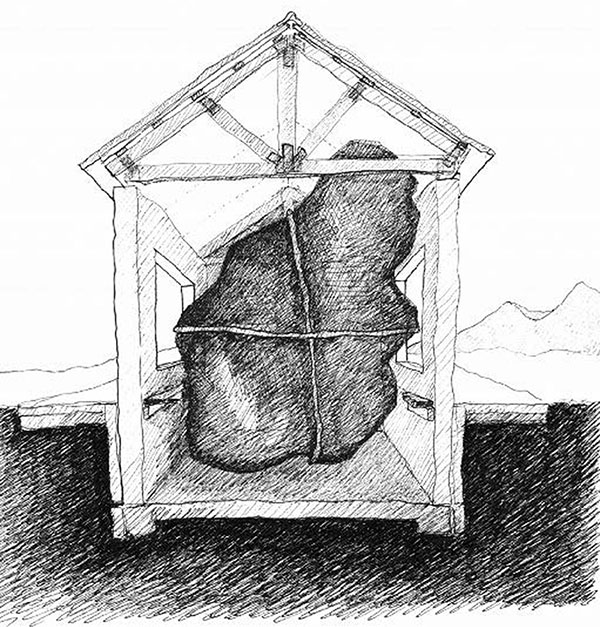
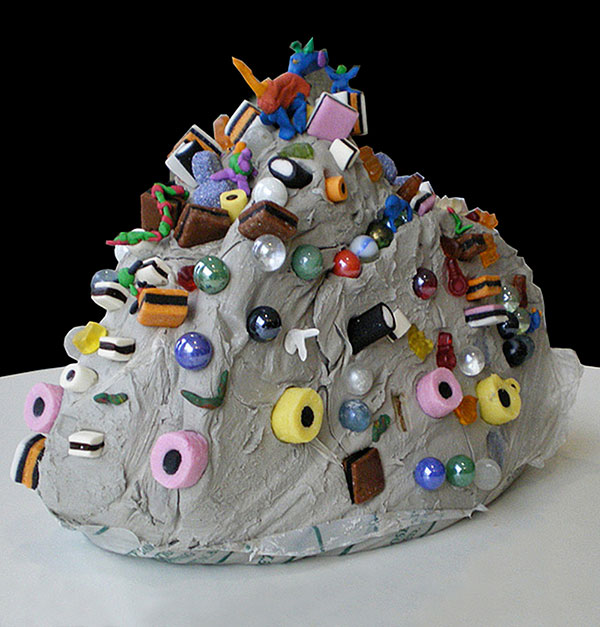
Prof. Colin Fournier

Space, whether man-made or natural, is never psychologically neutral. Architectural space and the objects within it are always loaded with emotions, although most architects, since the birth of Modernism, have been loath to admit it, in their arid search for an universal, isotropic Euclidian space, preferably unfettered by meaning and untainted by emotion.
In fact we find ourselves, from early childhood on, incessantly projecting our fears, our hopes, our loves and our hatreds upon the familiar and less familiar spaces around us, as well as upon the objects that are contained within them; so much so that, as a result of the sustained intercourse between human beings and their surrounding habitat, such feelings eventually appear not only to be embodied in particular places and artefacts, to inhabit them and even to haunt them, but also to actually emanate from them: our houses and their objects, it appears, are not only external manifestations of our psyche, they also have a psyche of their own. Or so it seems. Read more…
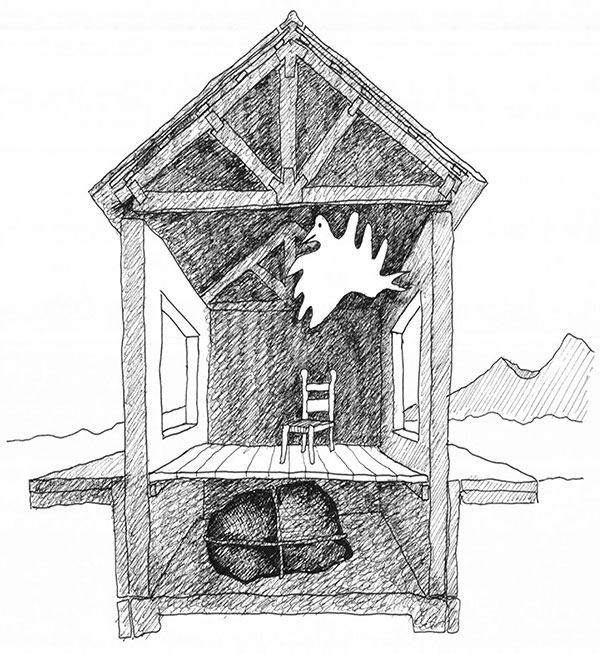
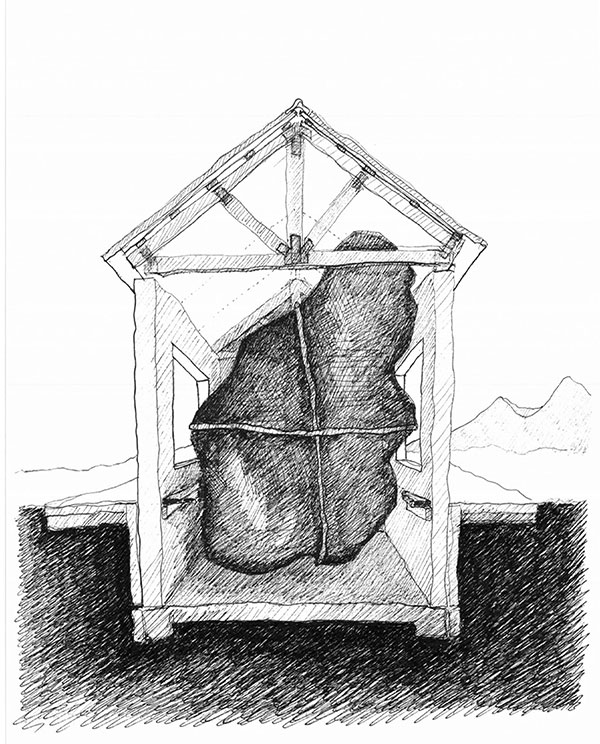
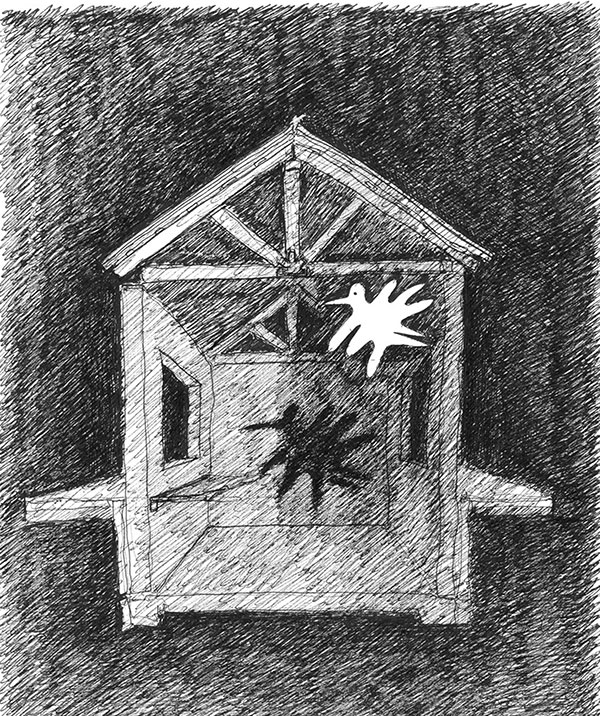
Kumiko Shimizu

Introduction
I am a wonderer and curious about anything. Likewise, my work has been changing because my awareness changes and increases with my experiences. Basically, I am always interested in what surrounds me. There are people, streets, trees, flowers, buildings, shops, dogs, cats, birds and of course information from books, TV and internet, etc… I have been trying to penetrate into those environments as a participant rather than just a spectator. That is the reason why I am an artist, making something in space, making a mark of my entity, like dogs and cats making marks and letting others know of their existence by their pee and poo.
From my history as an artist, it is not strange that my interest reached out to architectural design. My most important work, for myself, is “My Land Art”, when I made a huge drawing 124mx51m with 3809 stones, on farmland that is like the Nazka Lines; that could be considered like urban design (urban design for me is how to make a Beautiful City, like a painting or an installation but involving practical function). Read more…
Anger can be glamorous, even kind,
Anger can be generous and also blind
Anger seeks its own destruction and understanding
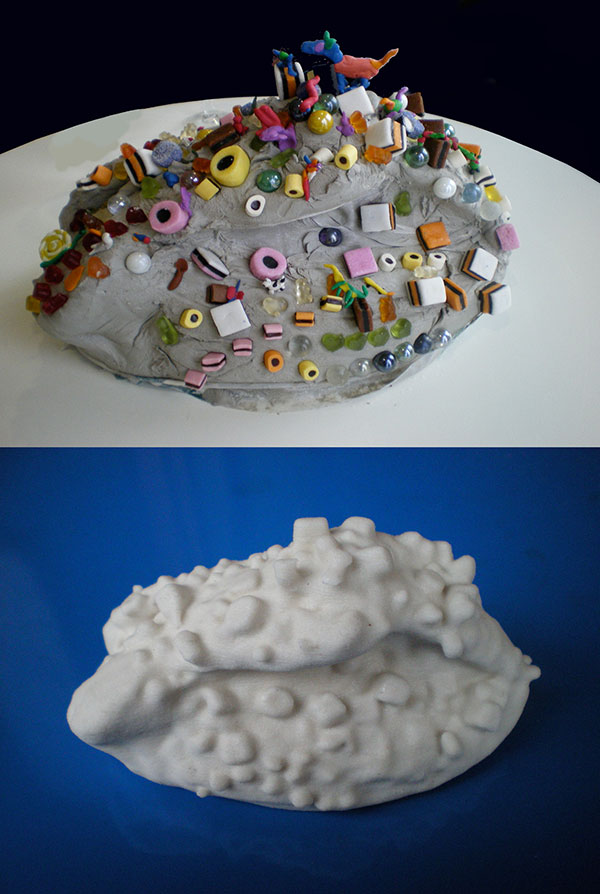
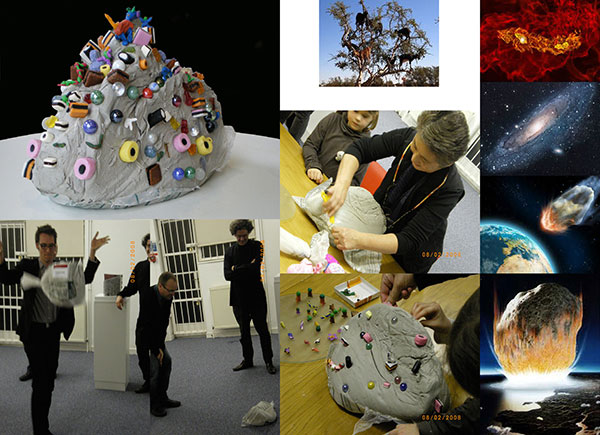
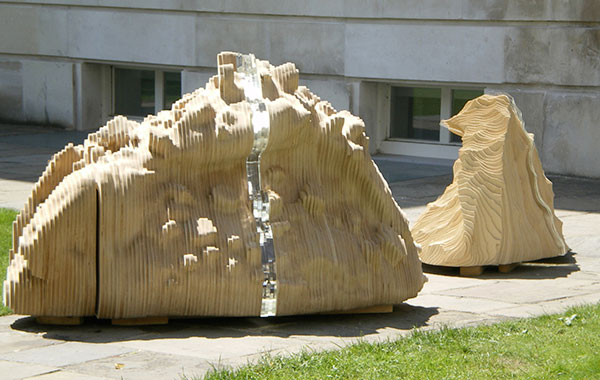
Summer Show 2010
Angry House
Angry House was first performed at the Design Museum in London, with an audience, as part of the London Festival of Architecture 2008. This design method seeks human action that involves emotion, in this case ANGER. Angry House asks people to throw a pack of clay of 12.5kg and make an architectural design. Throwing a pack of clay presents the expression of anger; that force contains enormous energy, in this case not just one person but many.
This pure abstract energy form, considered as destructive force, is diverted into creativity and made into a design, called A New Method of Architectural Design, Not Computer Generated but Man Generated. More than ten people’s energy transmitted into a pack of clay that is struck to the ground like an asteroid landed on earth; and the form that was made was architectural design. Read more…

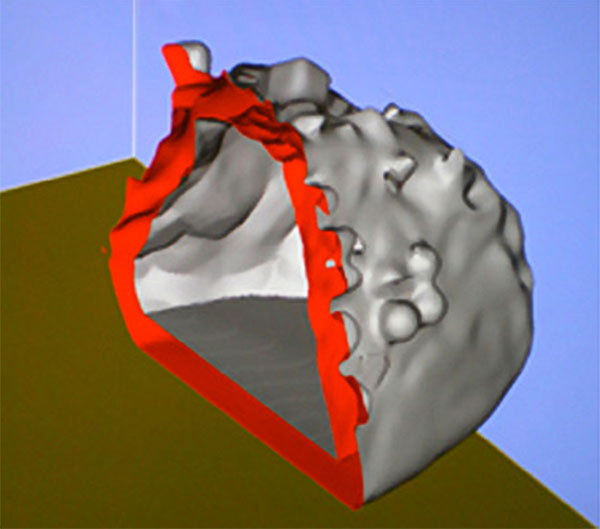
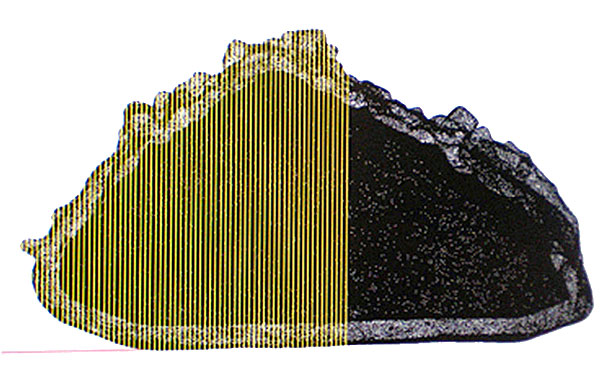

Methodology
- The project involves people, institutions and organizations as collaborators and constitutes the introduction of a new approach to architectural design. The method relies on human physical action in association with their emotion of “anger”. See video below…
- A collaborative performed work Angry House is scanned into 3D Printing. The result loses original form and changes into an abstract structure.
- Once the small model of the Angry House was scanned into 3D Printing it was sliced into 118 pieces and assembled through CADCAM program. Because of the 3mm difference between slices, the design takes a further development.
- The large model, (1.5m x 1m x 1m) is five times bigger than the original model size. Gouged out, the inside becomes a side product and stands as a part of the Angry House.
- The inside 15mm (3mm x 5) difference between slices creates a beautiful pattern, almost like a cave.
Future Plan
The methodology of the Angry House will lead to the new Angry House Pavilion Project that is planned for the summer of 2011 or 2012 and would call upon a new group of people as collaborators. This Pavilion would be five times bigger than the big model and twenty times bigger than the small model. The size will be around 6.5m x 4m x 4m. Along with the pavilion, Professor Colin Fournier and I, Kumiko Shimizu, are due to publish the Manifesto “Emotional Architecture”.
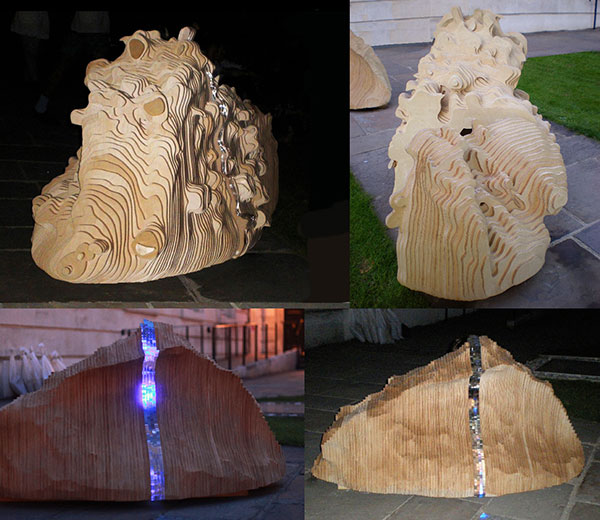
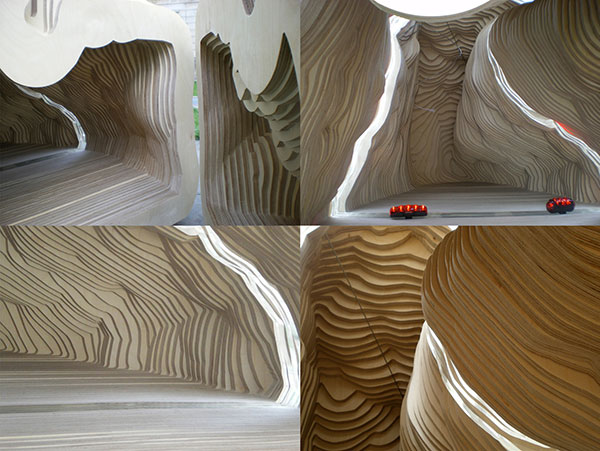
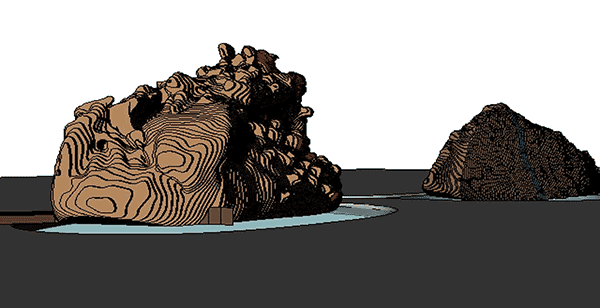
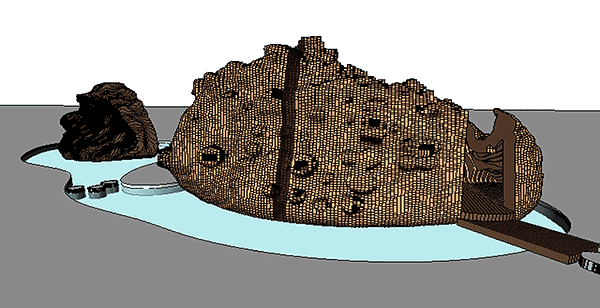
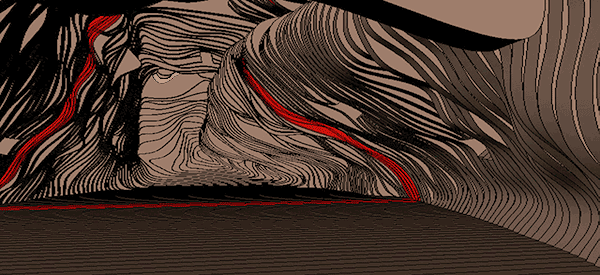
Dr Nick Dunn, Principal Lecturer,
Manchester School of Architecture

Digital Humanity: a hybrid approach to artistic practice
Architecture is fundamentally concerned with two core activities: designing and making. Of course, these activities are not mutually exclusive and often inform one another as part of a continuous flow or negotiation: as ideas develop from initial concepts, through design development, and emerge in a final form. The increasing proliferation of computers and advanced modelling software has enabled architects and artists alike to conceive and construct designs that would be very difficult to develop using more traditional methods of design and production.
A key area of experimentation and discourse in this regard lies across the interface between the manual and the digital, the humane and the computational. This has in turn, led the revival of the notion of craft albeit with a new and interdisciplinary understanding pertaining to the algorithmic and precise qualities that digital technologies may provide to augment and exchange more conventional methods of artistic and creative practice. Read more…
Richard Henley, Associate Director, ARUP

The Angry House - Zeitgeist
Is a work of art of its time or timeless?
How important is accessibility to a work; accessibility in its widest context, from that of the intellect to the physical?
No matter how such debate evolves it is substantially informed by the relationship of the piece to the Zeitgeist.
The recent global recession and the undoubtedly painful emergence from it will cause many people anger. The anger will be both individual and collective. Some will be rational, some will be emotional, but anger nonetheless. Some will keep it to themselves, some will be vocal and some violent. However expressed or vented it will affect all our lives in one way or another. Read more…
Abbas Nokhasteh, Director, Openvizor

Our urban lives are measured in units of time and space. We live in unaffordable boxes filled with acquisitions equally mass-produced, built upon a global language and celebration of utilitarian design, taken from rows and shelves of identical units of pre-conceived notions of happiness. Yet our daily experiences are the sum of emotional interactions and internal narratives, constantly created and re-constructed in the infinitely unique shapes of our days and nights.
Emotional Architecture, as research and practice, aims to encourage and inform audacity in design and urbanism, through architectonic explorations of the spatial, sculptural release of emotion, shaped by feelings often otherwise hidden or hard to express. Here we find and make alternative spaces to meet and engage internal and external topographies on their own terms, giving us the tools to build deeper empathy.
Openvizor is an organisation and platform supporting arts and cultural collaboration and practice development across borders, cultures and disciplines.
Contact Kumiko
